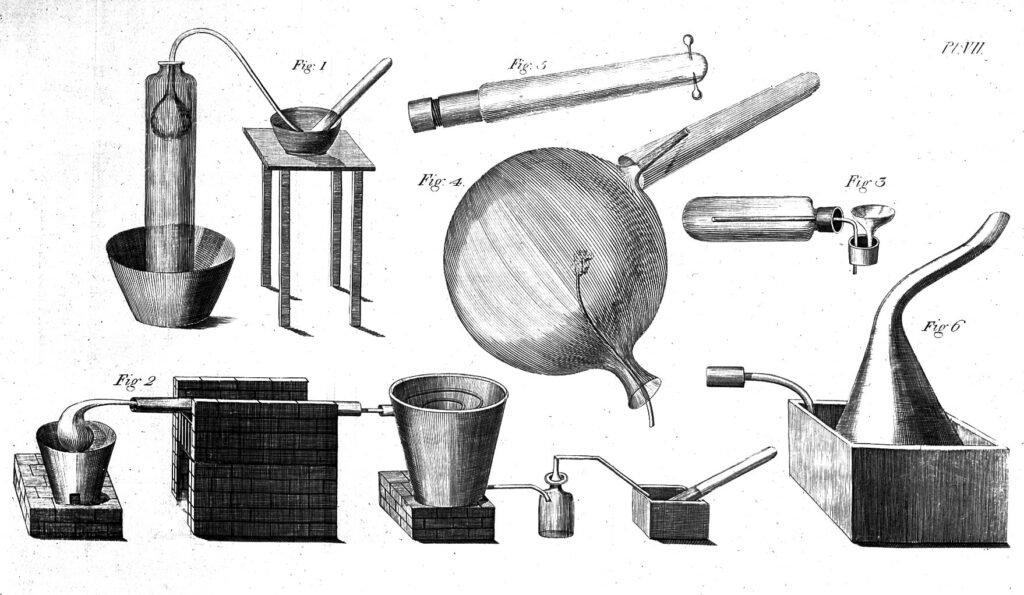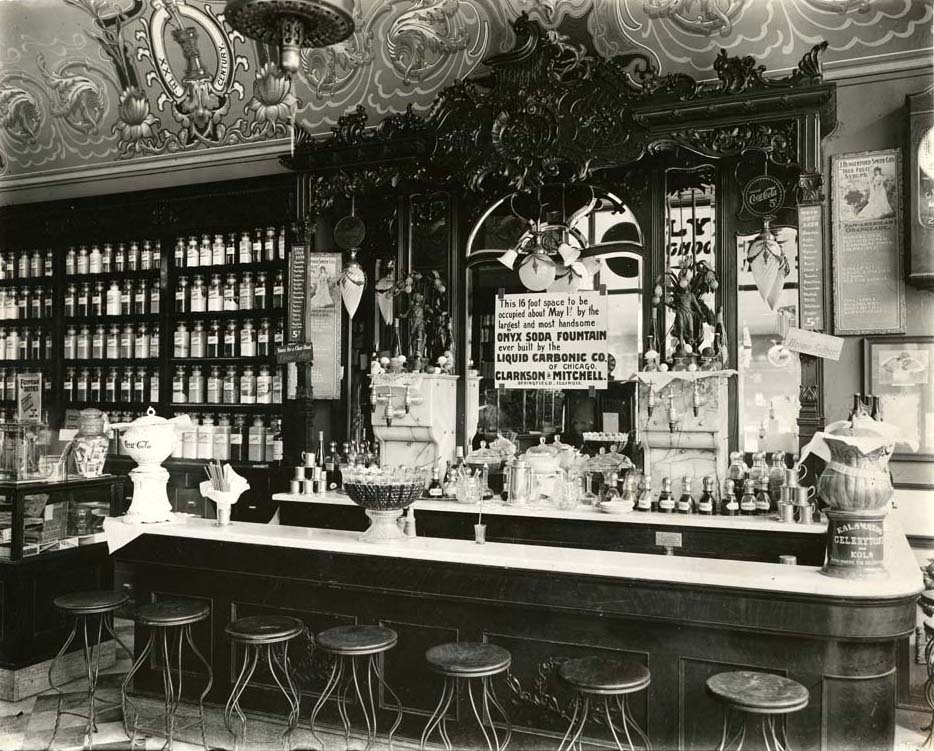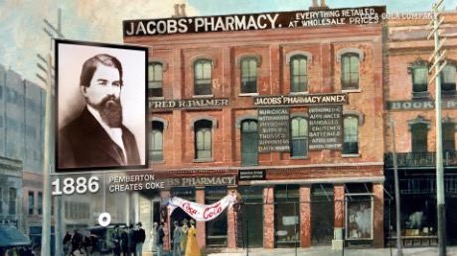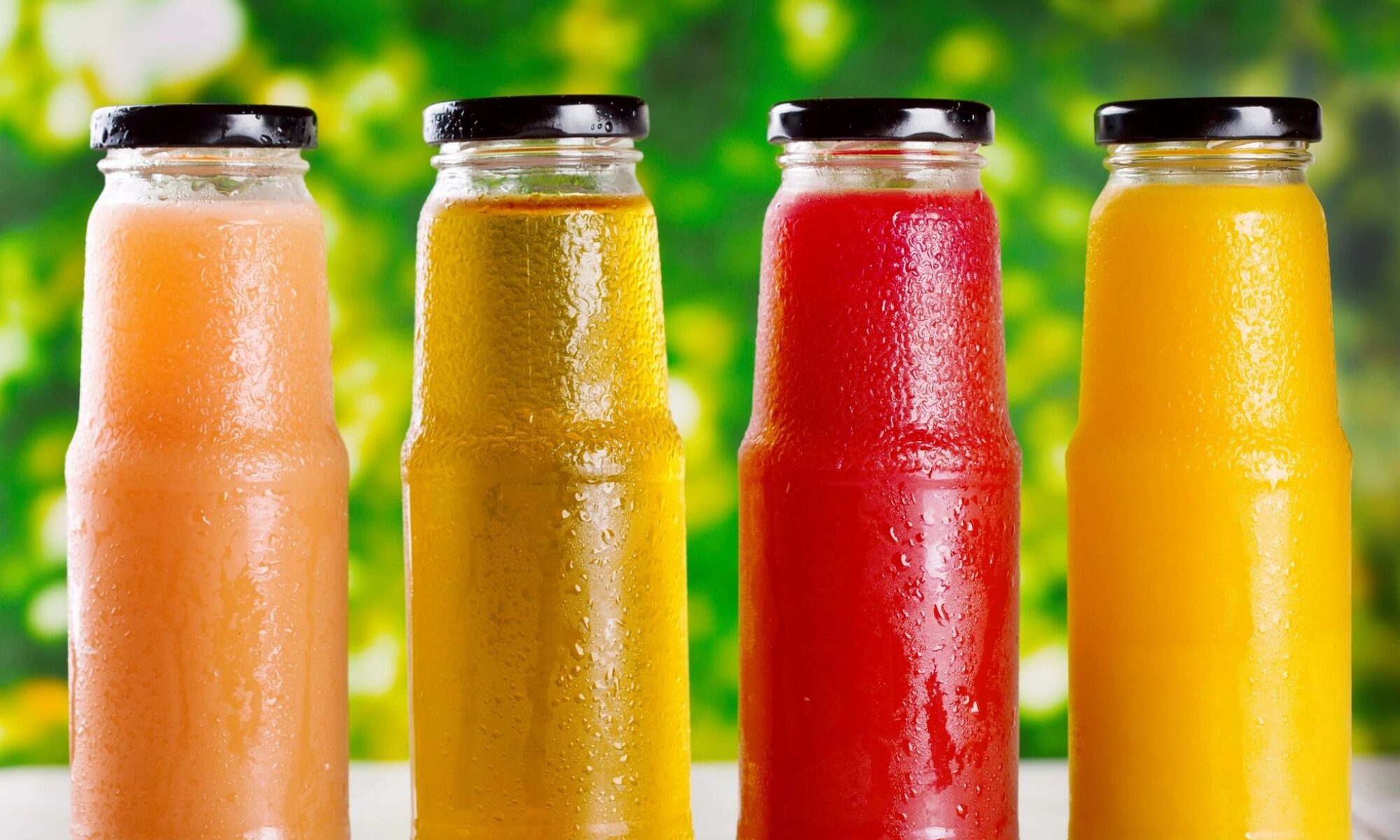A few months ago I wrote a blog called The Evolution of the Beverage Industry. My pal, Jim Tonkin, approached me at a recent industry event and told me he had higher expectations for that article. I took it to heart and decided to take his advice. This post is the first in a series of posts detailing the history of the beverage industry and the history of the various categories that have developed. I hope you, and Jim of course, enjoy these posts.
The History of the Beverage Industry: Which Brands Carried Its Evolution?

The beverage industry has a fascinating history, and not simply owing to the fact that drinks have been an integral part of the human experience since the dawn of civilization. The story of the industry begins much later, although still centuries ago.
With such a long development, it’s not surprising that there have been so many changes along the way in every aspect of the industry. Whether that’s the production of beverages, packaging, marketing, or the distribution of drinks, the industry has continually improved its processes, leading to the major commercial success and profitability of today.
To understand where the industry might be going in the future, as well as to evaluate its success and economic importance, we need to ask ourselves some questions that lead us into the past.
Where and how did the beverage industry make its first steps, and which brands carried its evolution?
Overview of the Beverage Industry
The beverage industry has two main sectors — the non-alcoholic beverage industry and the alcoholic beverage industry. Alcoholic beverage is a category that includes wine, distilled spirits, and brewing. However, the non-alcoholic category has a few sub-groups, some of which are the main facilitators of the growth of the entire industry. These sub-groups include:
- Soft drink and water bottling and canning;
- Soft drink syrup manufacture;
- Fruit juices bottling, canning, and boxing;
- Tea and coffee industry.
When we look at the beverage industry as a whole, its fragmentation is noticeable. There are many manufacturers, all with different production processes, packaging methods, and products. The one exception to this overall fragmentation is the soft drinks industry, and it is the first that began to transform from regional and local firms to global corporate giants. This process started in the early 1900s and is still going on today.
Economic Impact of Beverage Industry
Global sales of just one part of the beverage industry, carbonated soft drinks, are projected to reach $605 billion by 2025, according to Grand View Research reports. Every beverage type that is considered to be thriving is grossing billions in revenue annually. This doesn’t only include soft drinks, but alcoholic beverages as well. For some countries, the production of coffee is what keeps their entire economy going.
Additionally, the beverage industry has grown enough to employ millions of people around the world. What started as small pharmaceutical enterprises has turned into a sprawling global industry that is showing no signs of slowing down despite health and environmental controversies.
The Invention of Carbonated Beverages
In 17th century Europe, naturally carbonated water from springs was widely sought after due to its therapeutic qualities. The scientists of the time were fascinated by its carbon dioxide properties, which were first described as “gas” by Jan Baptista van Helmont, a Flemish scientist.
In 1685, Robert Boyle published Short Memoirs for the Natural Experimental History of Mineral Waters, where mineral water springs were explored in greater detail, along with ways of making artificial mineral water. Finally, in 1772, Joseph Priestley debuted his carbonating apparatus that eventually set him on the path to becoming the father of the soft drinks industry.
However, he wasn’t the first to produce carbonated water. This accomplishment is credited to Thomas Henry, an English apothecary who used a similarly designed apparatus. Following in their footsteps, Jacob Schweppe made his own carbonating device and began selling carbonated water in Geneva and London.
Therapeutic Intentions
Scientists and apothecaries were the first to start producing soft drinks because they intended to use them for therapeutic purposes. These early seltzers were used medicinally. By 1798, they were known as “soda water,” and in the early 1800s, the production of imitation mineral water was first patented and started on a large scale. The first soda water was bottled in the U.S. in 1835.
There was another interesting development during these years: soda fountains. Samuel Fahnestock patented the first one in 1819, and a hundred years later, virtually every apothecary had a soda fountain. In the 1840s, soda counters found their way into pharmacies. With time, soda fountains grew in popularity as meeting places where one could enjoy carbonated water and its healthful effects. However, that was just the beginning of the beverage industry’s journey.
New Flavors

The development didn’t stop at creating seltzer. Soon enough, drink makers began looking for ways to make their products more attractive by adding new flavors. They started mixing carbonated water with wine and flavored syrups, which is a practice that took off in the 1830s and became standard by the 1860s. You were able to buy seltzer with different flavors, including orange, lemon, pineapple, pear, peach, plum, apricot, grapes, different types of berries, melon, and apple.
Of course, suppliers and manufacturers were constantly on the lookout for new flavors and new ways to incorporate carbonated water into drinks. In 1874, ice-cream soda was invented and sold. Other drinks reached the peak of their popularity decades later during the prohibition era. Those drinks were ginger ale and root beer. Both of which were made with carbonated water.
Ginger Ale and Root Beer
In 1851, ginger ale was created in Ireland. It was part of the effort to flavor artificial mineral water, or rather carbonate other previously non-carbonated drinks. The man who popularized ginger ale and made a trademark drink out of it was a pharmacist from Canada, John McLaughlin, in 1890. In 1907, he invented what is known today as the Canada Dry version of Ginger Ale. This drink became especially popular during the Prohibition, as a perfect mixer to make spirits last longer and cover up their taste.
Root beer has had a similar history, but it was one of the more complex carbonated drinks. It contained more than 25 herbs and other ingredients when it was first introduced to the public in 1876. By 1839, Hires’ Root Beer was first bottled, distributed, and sold, becoming a popular variant of flavored carbonated water.
More Flavors
Cotton Club. The Cotton Club Bottling Company of Cleveland, Ohio was founded in 1902 as Miller-Becker Bottlers, named after Isaac Miller and Eli Becker. In 1954, a new bottling plant was built on E. 49th street when, that same year, soft drinks were sold in cans as well as bottles. The company name was changed to Cotton Club in 1963. During the 1960s and 1970s, the company bottled a variety of soft drinks with the Cotton Club name; grape, orange, ginger ale (and a ginger ale called Big Ginger 50/50, cola, root beer, cherry-strawberry, a fruit punch-soda called Tropical Delight and a red pop called Cherikee Red. SomeCotton Club products are still available in Ohio.
The Birth of Major Beverage Brands
The industry would forever be changed with the invention of the first sodas: Dr. Pepper, Coca-Cola, and Pepsi-Cola. All three entered the scene in the late 1800s.
The first was Dr. Pepper, invented by pharmacist Charles Anderton in Waco, Texas. The drink was born from Anderton’s experimentation with soft drinks and sold at his soda fountain. It quickly became so popular that Anderton had trouble keeping up with the demand. The Dr. Pepper formula was and is a secret, but back in the day, it was advertised as an energizing brain tonic. There are speculations that the drink was named after Dr. Charles Pepper, whom Anderton had worked for before starting to experiment with making his own drinks.
Just a year later, in 1886, Dr. John Pemberton created Coca-Cola through a unique combination of coca leaves from South America and kola nut from Africa. Pemberton was another pharmacist, working in Atlanta. He created the formula on his own and started selling it from a soda fountain at Jacob’s Pharmacy in Atlanta. However, it wasn’t until businessman Asa Candler bought the formula from Pemberton and began manufacturing it on his own that the drink really became popular.

And in 1898, Caleb Bradham invented Pepsi-Cola. Initially called Brad’s Drink, it contained the now-famous kola nut, along with sugar, caramel, lemon oil, nutmeg, and, of course, carbonated water. When it started becoming more popular at his soda fountain, Bradham named it Pepsi-Cola, trademarked the drink, and began selling it as a digestive aid.
Expansion of the Industry
As these drinks gained popularity, the industry was growing more focused on bottled products, which led to the eventual downfall of soda fountains. To put the rate of this growth into context, there were 123 plants in the United States bottling soft drinks in 1860. Ten years later, that number grew to 387. In 1900, 2,673 plants were bottling soft drinks in the U.S.
One of the reasons for this speedy expansion was the impeccable public image of soft drinks. Seen as a tame alternative to alcoholic beverages, they were the respectable option that one could buy at a pharmacy. Of course, many industrial developments allowed for more efficient manufacturing and distribution process, such as replacing horse-drawn carriages with gas-motored trucks.
Finally, there is the appeal of advertising as well. While Coca-Cola had its aggressive advertising campaigns led by Candler, Pepsi wasn’t too far behind. In fact, they were the first brand to use the appeal of celebrities, hiring a famous race car driver, Barney Oldfield, in 1913 to be their brand spokesman.
Mass Production
The industry grew so fast, and technology advanced quickly enough to allow the start of mass production as early as the first decade of the 1900s. In 1904, there were one million gallons of Coca-Cola sold annually. Still, there were obstacles that the industry had to face, especially during World War I and World War II.
Pepsi Cola went bankrupt in 1923, after Bradham’s unsuccessful gamble with trying to profit off the prices of sugar. In the 1930s, Pepsi was reformulated and put in packages almost double the size of Coca-Cola, scoring them an effective advertising campaign with “twice as much for a nickel.” They survived World War II by becoming a popular drink for U.S. soldiers.
After the tumultuous war years, the industry continued to develop and advance its bottling and packaging processes. In 1957 we saw the invention of aluminum cans for soft drinks. In 1965, we got our first canned soft drinks in vending machines. And in the 1970s, the industry introduced plastic packaging for soft drinks, specifically the Polyethylene Terephthalate bottle. Out of all the beverage industry inventions, this one was by far the worst when it comes to environmental impact.
However, there are other concerns about the impact of soda, not only on our planet but on our health as well.
Health Impact of Soda
Even though soda drinks started as pharmaceutical products, the industry and mass production changed their purpose over time. During the soda fountain days, sodas were made with mostly natural and healthy ingredients, with syrups that weren’t overly sweet. But by the 1990s, soda drinks have transformed so much that there were barely any healthy ingredients left in them.
Even in 1942, there were some controversies connecting sugar-sweetened beverages or soda drinks to certain health issues. The first studies confirming these doubts appeared in 1994. Health issues like obesity, diabetes, and tooth decay contributed to consumers rallying against giants like Coca-Cola and Pepsi.
In 2009, 33 states implemented taxes on soft drinks, and this was the start of a legislative struggle to limit the harmful health effects of sugar-sweetened beverages. However, many of these proposals failed — most notably, the 2013 New York City attempt to ban the sale of soft drinks larger than 16 ounces.
Despite their initially positive public image, soft drinks are now being viewed as harmful, and many manufacturers are required to put health warning labels on their drinks. Much like alcohol and tobacco, sodas have fallen out of public favor, and they have almost nothing in common with the drinks that gave birth to the industry.
Key Takeaways
The beverage industry has come a long way since its inception in the late 1700s. From the hands of pharmacists, it slowly transferred into the hands of businessmen and advertisers, who are largely responsible for the breakneck speed of its growth. It developed at the same pace new technologies did, allowing the manufacturers and distributors to break old boundaries with each passing year. This process eventually resulted in the massive industry we know today.
However, with consumers beginning to turn more to healthier and more environmentally-friendly options, the industry as we know it today is certainly going to keep changing. For every aspiring beverage entrepreneur, it’s important to follow industry insights and draw conclusions about the potential direction of the development of the industry itself. Opportunities for innovation might be just around the corner.

